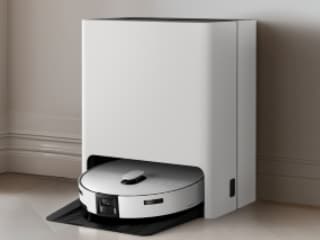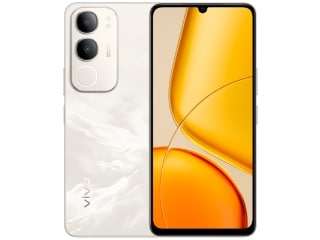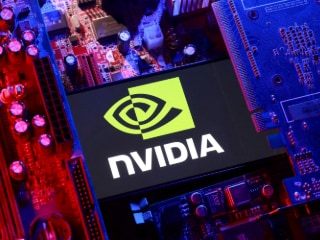- Home
- Mobiles
- Mobiles Features
- OnePlus Nord vs Realme X3 SuperZoom: Best Phone Under Rs. 30,000?
OnePlus Nord vs Realme X3 SuperZoom: Best Phone Under Rs. 30,000?
Can there be a clear winner?

The OnePlus Nord and Realme X3 SuperZoom are both excellent offerings, but which is better for you?
The OnePlus Nord (Review) is one of the most affordable 5G smartphones in the Indian market today, and offers a well-rounded set of features for the price. However, the competition is quite fierce. Xiaomi has its Redmi K20 Pro (Review), which has long been a solid choice under Rs. 30,000. More recently, Realme's X3 SuperZoom (Review) has proven to be a strong force to be reckoned with too, and we'll be pitting it against the OnePlus Nord in today's comparison.
Usually, smartphones in the same price range tend to have similar specifications, so in such comparisons, picking a winner typically boils down to which one has the better cameras and value-added features such as unusually fast charging, etc. In this case, with the Nord versus the X3 SuperZoom, there's a much bigger disparity in specifications, which makes picking a clear winner a bit more challenging. But hey, if we don't do the dirty work, then who will?
It's time to see if the OnePlus Nord can hold its own against the powerhouse that is the Realme X3 SuperZoom.
OnePlus Nord vs Realme X3 SuperZoom prices and variants: Solid value on both fronts
Before we dive into the nitty-gritties of each phone's performance, let's have a look at what sort of RAM and storage combinations are available. The Realme X3 SuperZoom starts at Rs. 27,999 for 8GB of RAM and 128GB of storage, followed by a Rs. 32,999 variant which has 12GB of RAM and 256GB of storage.
The OnePlus Nord starts at Rs. 24,999 for 6GB of RAM and 64GB of storage, but this variant will only be available through Amazon, and that too only from September onwards. The versions that are going on sale in early August include one with 8GB of RAM and 128GB of storage priced at Rs. 27,999, and another with 12GB of RAM and 256GB of storage which will cost Rs. 29,999.
Both phones are available in different colours. The OnePlus Nord comes in Blue Marble and Grey Onyx trims on the company's online store, for both, the 8GB and 12GB variants. The Realme X3 SuperZoom is available in an open sale, in Arctic White and Glacier Blue trims.
I'll be comparing the top-end versions of the OnePlus Nord and the Realme X3 SuperZoom. The Nord has a slight advantage over the X3 SuperZoom in terms of pricing, as its base and top-end variants are less expensive than Realme's counterparts. On the other hand, the X3 SuperZoom has a more powerful processor and an optical zoom camera, which could help it justify its premium.
![]()
The OnePlus Nord (left) has slightly more compact dimensions than the Realme X3 SuperZoom (right)
OnePlus Nord vs Realme X3 SuperZoom design and display: OnePlus draws first blood
The OnePlus Nord and the Realme X3 SuperZoom look similar at first glance, since both phones have dual hole-punch cutouts in their displays; left aligned rear camera modules; similar placements of buttons and ports; and no headphone jacks. However, the differences become apparent once you hold them side-by-side. The Realme X3 SuperZoom has a larger footprint than the OnePlus Nord. It's also slightly thicker and heavier. Both smartphones have glass backs and each looks equally good. The OnePlus Nord has the additional alert slider for quickly switching between different sound profiles.
Looking purely at these phones' physical designs and ergonomics, I'd go with the OnePlus Nord as it feels a bit more compact, and is lighter and easier to live with.
Preference for an AMOLED versus an LCD display could be a deciding factor for many buyers. The OnePlus Nord has a 6.44-inch AMOLED screen with a 90Hz refresh rate, while the Realme X3 SuperZoom has a 6.6-inch LCD screen with a 120Hz refresh rate. Both have full-HD+ resolutions, and Gorilla Glass 5 protection. Honestly, I could barely tell any difference in smoothness in scrolling, general usage or even gaming, between the X3 SuperZoom's 120Hz display and the 90Hz one on the Nord.
The displays of both phones get equally bright, with good colour saturation, but I noticed that whites looked a bit crisper on the Realme X3 SuperZoom. This was with the colour profiles on both phones set to ‘Vivid.' The OnePlus Nord's AMOLED display does have its share of advantages too. The ambient display feature makes it easy to check the time or notifications with a glance, without the need to turn the screen on. I also noticed that black levels are a bit better, and it supports HDR10+, for a wider colour gamut in compatible videos.
The OnePlus Nord has an in-display fingerprint sensor, compared to the side-mounted capacitive one on the X3 SuperZoom. Both work equally well at authentication. It also has a slightly smaller chin at the bottom, compared to Realme's offering.
If I had to choose, I'd go with the OnePlus Nord's AMOLED display simply because of the convenience of the ambient display feature, and the HDR support.
OnePlus Nord vs Realme X3 SuperZoom software: An easy pick
Realme has come a long way with its Android implementation and I think the current version of Realme UI is just as functional as OnePlus' OxygenOS skin. Both are based on Android 10, offer options to customise the interface, and have useful features such as built-in screen recorders. However, I'd still vote for the OnePlus Nord, simply because it doesn't come with a lot of preinstalled bloatware and redundant apps, like the Realme X3 SuperZoom does.
OnePlus has also claimed that the Nord will receive Android updates for the next two years and security updates for the next three years. While the X3 SuperZoom will most likely get the Android 11 update in the near future, anything beyond that is still unknown.
OnePlus Nord vs Realme X3 SuperZoom performance: Realme wins some points
Besides the displays, the SoCs are the second biggest difference between these two phones. The OnePlus Nord features the Qualcomm Snapdragon 765G SoC, which is the current top-end model in Qualcomm's mid-tier 700 series. Integrated 5G makes the Nord a bit more future-proof, for traveling abroad, or whenever 5G is available in India. The Realme X3 SuperZoom features the fastest LTE SoC from Qualcomm, the Snapdragon 855+. It doesn't support 5G, but in terms of raw power, is still faster than the chip in the OnePlus Nord. Just take a look at the AnTuTu scores from both phones to see the difference.
![]()
The Realme X3 SuperZoom (right) clearly has the more powerful SoC, compared to the OnePlus Nord (left)
Of course, benchmark numbers are one thing, but the difference is visible in some apps too. For instance, scrolling through a Twitter feed feels a bit smoother on the X3 SuperZoom, and this is with 12GB of LPDDR4X RAM in both phones. Realme has also used the newer UFS 3.0 flash storage standard, compared to the UFS 2.1 storage in the Nord, which gives it faster read/write speeds in apps.
Heavy games such as PUBG Mobile tend to load a tiny bit faster on the X3 SuperZoom, and it offers higher graphics quality options compared to the OnePlus Nord. With the quality set to ‘HD' and framerate to ‘High', I had similar experiences playing the game on both devices. After about 30 minutes of gameplay, the bodies of the OnePlus Nord and the Realme X3 SuperZoom both got fairly warm, but neither was uncomfortably hot.
However, I have to say with most general usage, which included using social apps and basic multitasking, the OnePlus Nord and the Realme X3 SuperZoom performed equally well.
If you're looking at picking up either of these phones for gaming, then you ought to know that even though the OnePlus Nord does a decent job with demanding games, the Realme X3 SuperZoom simply has more power and will allow you to get the best out of any game you run on it.
Switching to media playback, the OnePlus Nord and the Realme X3 SuperZoom both have single, bottom-firing, super-linear speakers. Realme uses Dolby Atmos, while OnePlus uses Dirac for boosting the audio levels and quality of the speaker. In terms of loudness, both are more or less the same, but I found that the Nord's speaker produced better clarity and warmth, especially at maximum volume.
![]()
The Realme X3 SuperZoom (right) and the OnePlus Nord (left) have good battery life and charge very quickly
The OnePlus Nord and Realme X3 SuperZoom have similar sized batteries, with 4,115mAh and 4,200mAh capacities respectively. Real-world battery performance was equally good, with both phones easily lasting for about a day and half with medium to light usage. Surprisingly, the Realme X3 SuperZoom ran for nearly 22 hours in our video loop test, despite having a more powerful SoC, compared to the 14.5 hours I got with the OnePlus Nord.
Both smartphones support 30W fast charging, using predominantly the same technology. Even though each brand has its own name for its fast charging method, the Realme X3 SuperZoom will ‘Dart Charge', when connected to the OnePlus Nord's ‘Warp Charge' charger, and vice versa. Both brands of course have the same parent company, BBK Electronics, and both share technologies between themselves and with Oppo.
OnePlus Nord vs Realme X3 SuperZoom cameras: A tough call
The OnePlus Nord matches the Realme X3 SuperZoom for the total number of cameras, which is six. However, on paper at least, Realme beats OnePlus when it comes to the types of sensors and lenses used.
The OnePlus Nord uses the same primary 48-megapixel sensor as the OnePlus 8, but the rest of the rear cameras are the standard wide-angle, macro, and depth cameras. Realme on the other hand uses a 64-megapixel primary camera for the rear, along with an impressive telephoto camera, and then a wide-angle and a macro camera.
The selfie cameras are very similar – both phones offer primary 32-megapixel cameras and 8-megapixel wide-angle ones, with the same 105-degree field of view.
Tap to see larger image
Let's first compare the two phones' primary cameras. Under good light, the OnePlus Nord captured more dramatic-looking shots, with more defined shadows and deeper contrast, compared to the Realme X3 SuperZoom, which captured more natural-looking photos with less emphasis on the shadows. Samples shot with each phone's wide-angle camera also had the same colour tones, but here, the Nord's camera produced marginally better details.
Tap to see larger image
With close-ups, I found that the OnePlus Nord captured more accurate colours, compared to the X3 SuperZoom. The macro cameras on both phones are not great, as they are low-resolution. For portrait shots, both phones did a good job of blurring out the right areas behind the subject, but the Nord clearly produced the better photo. The background was better exposed, and textures on my hands and face weren't smoothened out aggressively, like with the X3 SuperZoom.
In low-light photos, the OnePlus Nord once again delivered better exposure and details. However, both phones' wide-angle cameras produced very poor shots. The OnePlus Nord and Realme X3 SuperZoom have a Nightscape shooting mode, which promises better low-light shots. With this, the Nord leaps ahead of the X3 SuperZoom, producing a much better exposed image. However, it's the X3 SuperZoom that managed slightly better exposure with its wide-angle camera using the same mode.
Tap to see larger image
There's also a ‘Tripod' mode on both phones, which captures multiple frames at varying exposures over a much longer duration, assuming that the phone will be stabilised and not hand-held. When mounted on a tripod, the Realme X3 SuperZoom captured better details, as exposure was more consistent, compared to the OnePlus Nord.
The Realme X3 SuperZoom does have one secret weapon, and that's its telephoto camera. The OnePlus Nord manages to hold its own till about 2x zoom, but anything beyond that ends up looking like a blurry mess. The X3 SuperZoom continued to capture excellent details even at 10x, and could go well beyond that too, unlike the Nord.
Tap to see larger image
Despite both phones having the same Sony IMX616 selfie cameras, I found that the OnePlus Nord captured better exposed selfies, with more natural skin tones. The same was true for the wide-angle camera too. The X3 SuperZoom was too aggressive in smoothening skin textures. Portrait selfies are supported on both devices, and in this challenging shot, taken against the light, it was the OnePlus Nord that delivered the better picture. With indoor selfies, under artificial light, the OnePlus Nord still did a better job with white balance, although details were fairly good from both cameras.
Tap to see larger image
The OnePlus Nord and the Realme X3 SuperZoom can shoot video at 4K. Details are generally good, although certain colours can look exaggerated. Colours looked more natural at 1080p on both phones, and you can switch between the different rear camera sensors while recording at this resolution. In low light, the OnePlus Nord captured less noise at 4K, although the X3 SuperZoom gave me slightly brighter footage.
The Nord also had the upper hand in selfie videos, as it is able to shoot at up to 4K 60fps, compared to 1080p 30fps on the X3 SuperZoom.
Overall, the Realme X3 SuperZoom completely destroys the OnePlus Nord when it comes to zoom performance, but for everything else, the Nord is a step ahead.
Verdict
The Realme X3 SuperZoom has two stand-out features — its processor and its telephoto camera. If you are an avid gamer and/or are looking for a high-quality zoom camera in this price segment, the X3 SuperZoom is your best bet. When reviewing this phone, I found its zoom lens could rival those of even the higher-priced OnePlus 8 Pro (Review) and Samsung Galaxy S20+ (Review), which is saying a lot. Plus, if you're into night photography, the X3 SuperZoom offers the right tools to get more out of your night shots.
The OnePlus Nord on the other hand doesn't do as exceptional a job in games and isn't capable of that level of zooming, but it does more than enough to get by. When you take into account other areas where I feel it has the upper hand, such as the clean software, AMOLED display, compact body, 5G support, and ability to shoot 4K 60fps with the main selfie camera, it's definitely a more rounded package, and so it will appeal to a wider audience.
Is OnePlus 8 Pro the perfect premium phone for India? We discussed this on Orbital, our weekly technology podcast, which you can subscribe to via Apple Podcasts or RSS, download the episode, or just hit the play button below.
Get your daily dose of tech news, reviews, and insights, in under 80 characters on Gadgets 360 Turbo. Connect with fellow tech lovers on our Forum. Follow us on X, Facebook, WhatsApp, Threads and Google News for instant updates. Catch all the action on our YouTube channel.
Related Stories
- Samsung Galaxy Unpacked 2025
- ChatGPT
- Redmi Note 14 Pro+
- iPhone 16
- Apple Vision Pro
- Oneplus 12
- OnePlus Nord CE 3 Lite 5G
- iPhone 13
- Xiaomi 14 Pro
- Oppo Find N3
- Tecno Spark Go (2023)
- Realme V30
- Best Phones Under 25000
- Samsung Galaxy S24 Series
- Cryptocurrency
- iQoo 12
- Samsung Galaxy S24 Ultra
- Giottus
- Samsung Galaxy Z Flip 5
- Apple 'Scary Fast'
- Housefull 5
- GoPro Hero 12 Black Review
- Invincible Season 2
- JioGlass
- HD Ready TV
- Laptop Under 50000
- Smartwatch Under 10000
- Latest Mobile Phones
- Compare Phones
- OnePlus 15R
- Realme Narzo 90x 5G
- Realme Narzo 90 5G
- Vivo S50 Pro Mini
- Vivo S50
- OPPO Reno 15c
- Redmi Note 15 5G
- Redmi Note 15 Pro 5G
- Asus ProArt P16
- MacBook Pro 14-inch (M5, 2025)
- Infinix Xpad Edge
- OnePlus Pad Go 2
- Just Corseca Skywatch Pro
- Honor Watch X5
- Acerpure Nitro Z Series 100-inch QLED TV
- Samsung 43 Inch LED Ultra HD (4K) Smart TV (UA43UE81AFULXL)
- Asus ROG Ally
- Nintendo Switch Lite
- Haier 1.6 Ton 5 Star Inverter Split AC (HSU19G-MZAID5BN-INV)
- Haier 1.6 Ton 5 Star Inverter Split AC (HSU19G-MZAIM5BN-INV)



















